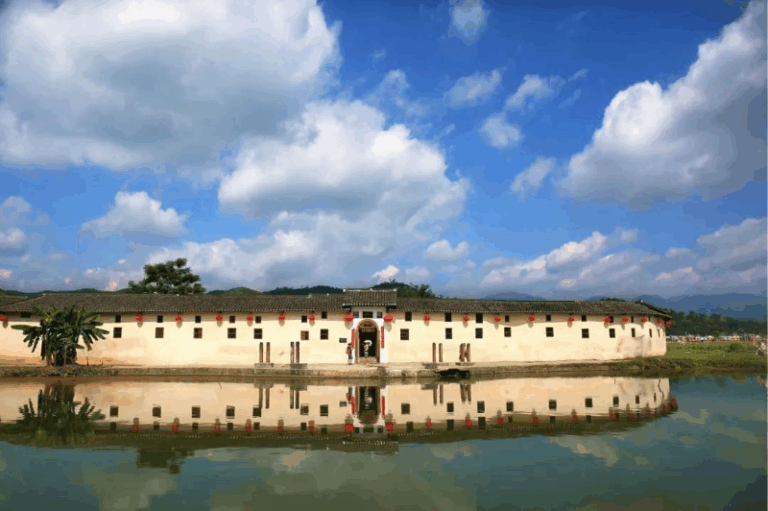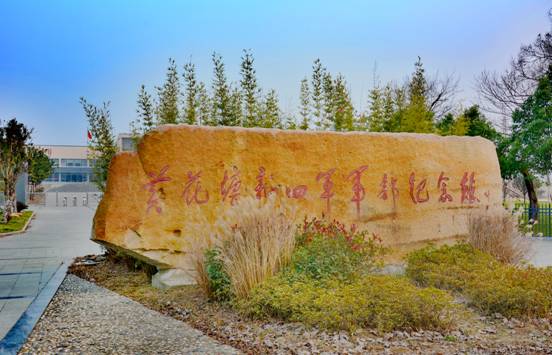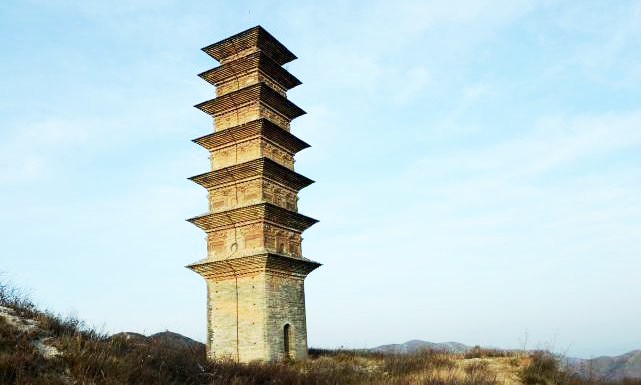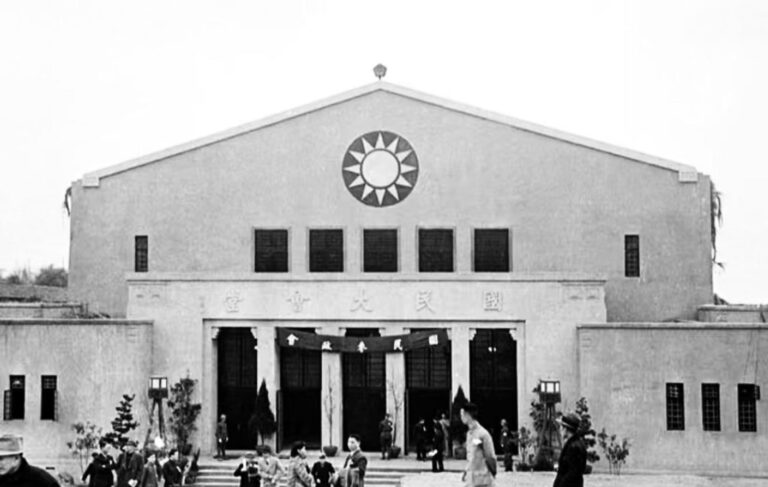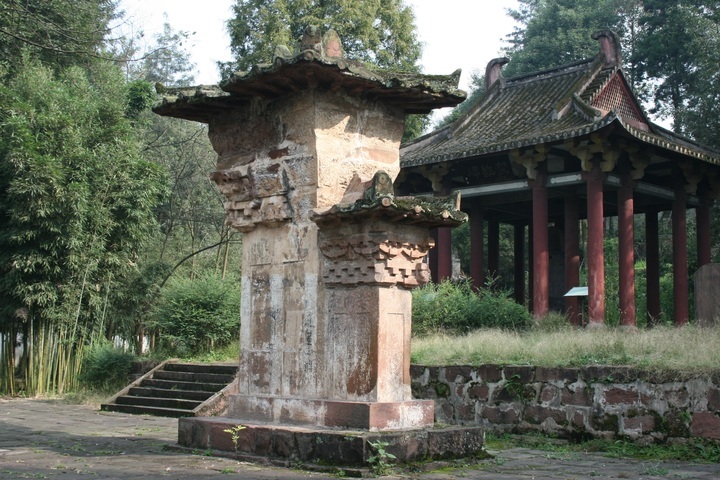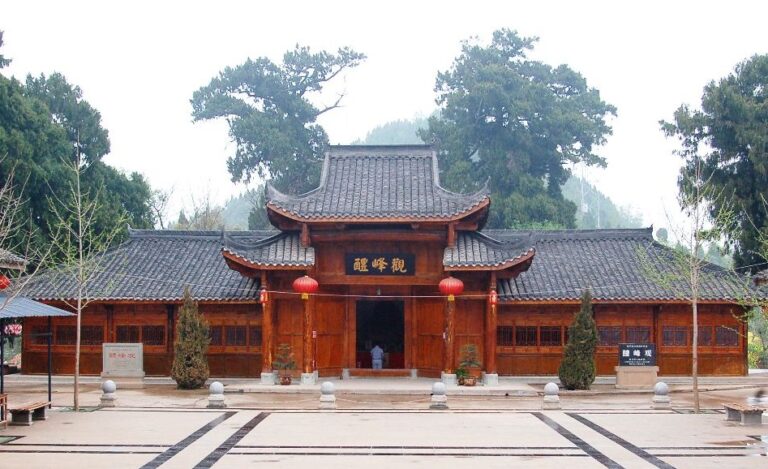Top 10 Must-See Attractions in Huludao Shengshuisi for Every Traveler
An Essential Guide to Visiting Huludao Shengshuisi
In This Guide
- An Essential Guide to Visiting Huludao Shengshuisi
- The Rich History of Huludao Shengshuisi
- Main Highlights: What to See at Huludao Shengshuisi
- Planning Your Visit: A Practical Guide
- Tickets, Hours, and Booking
- How to Get There
- Local Cuisine and Accommodation
- Frequently Asked Questions
- Final Thoughts on Your Trip
Nestled in the serene embrace of Lianhua Mountain, Huludao Shengshuisi (圣水寺) is a spiritual haven that combines rich history with breathtaking natural beauty. Located about thirty kilometers north of Huludao City in Liaoning Province, this ancient temple complex has become a cherished destination for both pilgrims and tourists alike. Established in 1720 during the reign of the Qing Dynasty, Shengshuisi is renowned for its stunning architecture and the sacred spring that flows nearby, believed to possess healing properties.
As you approach the temple, the impressive Tianyuan Palace welcomes you with its distinct three-tiered structure, showcasing the intricate craftsmanship of traditional Chinese architecture. The temple grounds, sprawling over 10,000 square meters, include various halls and pavilions where visitors can immerse themselves in Buddhist, Taoist, and Confucian traditions. Each corner of this serene complex offers a unique glimpse into the cultural tapestry of China, making it a perfect spot for reflection and exploration.
Visitors are drawn not only by the spiritual significance of Shengshuisi but also by the enchanting landscape that surrounds it. The harmonious blend of ancient buildings with the lush greenery of the mountain creates a picturesque setting, ideal for photography and peaceful contemplation. Whether you’re seeking spiritual enlightenment, cultural enrichment, or simply a moment of tranquility, Shengshuisi promises an unforgettable experience steeped in history and natural wonder.

Huludao Shengshuisi.
The Rich History of Huludao Shengshuisi
Located at the southern foot of Lianhua Mountain, approximately thirty kilometers north of Huludao City, Shengshuisi (圣水寺), or the Holy Water Temple, boasts a rich history that dates back to the early 18th century. Established in 1714 during the Qing Dynasty under the reign of Emperor Kangxi, the temple was founded by the esteemed monk Chonghui. His vision was to create a sanctuary for spiritual cultivation and community service, leading to the construction of Shengshuisi.
Originally named Shengshui Temple, the site was chosen for its natural beauty and the presence of a perennial spring that flows year-round, famously referred to as “Holy Water.” This spring feeds into the temple’s lotus pond, enhancing the serene and mystical atmosphere that surrounds the site. The temple’s name reflects this divine connection to the sacred spring, which is believed to have healing properties.
Over the years, Shengshuisi underwent numerous expansions and renovations, particularly during the early years of the Republic of China. Its architectural layout features a harmonious blend of Buddhist, Taoist, and Confucian elements, making it a significant cultural landmark in the region. The temple complex spans approximately 10,000 square meters and consists of a main hall, east and west wings, and various pavilions.
One of the most notable structures within the temple complex is the Tiangong Palace (天元宫), a striking three-story building that serves as the main entrance. Its unique architectural features include a square base with a circular dome and intricate decorative elements, which symbolize the ancient Chinese cosmological belief in the harmony between heaven and earth. Adjacent to the palace are the bell and drum towers, enhancing the temple’s majestic presence.
Shengshuisi has not only served as a spiritual hub but has also been recognized as a national key cultural relic protection site, attracting tourists and pilgrims alike. The temple’s lush surroundings and tranquil ambiance make it a popular destination for both local and international visitors seeking peace and spiritual rejuvenation. With its deep historical roots and architectural grandeur, Shengshuisi stands as a testament to the rich cultural heritage of the region and continues to be a cherished landmark in modern-day China.
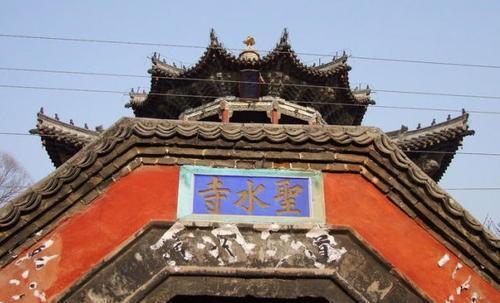
Huludao Shengshuisi.
Main Highlights: What to See at Huludao Shengshuisi
Nestled at the southern foothills of Lianhua Mountain, about 30 kilometers north of Huludao city, the Shengshuisi (圣水寺) offers a serene escape into a realm of spirituality and architectural beauty. This ancient temple complex, established in 1720 during the Qing Dynasty, is renowned for its impressive layout and rich history, making it a must-visit destination for travelers.
One of the temple’s most striking features is the Tianyuan Palace, which serves as the grand entrance. This three-story structure showcases a unique blend of traditional Chinese architectural styles, characterized by its square base and round dome. The intricate carvings and decorations reflect the artistic prowess of the era, drawing visitors into its majestic presence.
The temple complex spans approximately 10,000 square meters and includes various halls and courtyards, each dedicated to different deities and spiritual practices. The central hall is dedicated to Sakyamuni, the Buddha, while adjacent halls honor the Medicine Buddha and Amitabha, creating a spiritual triad that embodies the essence of Buddhism.
Visitors can also enjoy the tranquil surroundings, particularly the Lotus Pond, which is fed by a perpetual spring referred to as “Holy Water.” This spring flows year-round, and its soothing waters create a picturesque setting, especially in winter when steam rises from the warm water against a backdrop of frost.

Huludao Shengshuisi.
The Shengshuisi not only serves as a place of worship but also as a cultural treasure, reflecting the harmonious integration of Buddhism, Taoism, and Confucianism. Its well-preserved architecture and lush gardens offer a peaceful retreat for meditation and reflection.
For those looking to explore further, the surrounding area boasts additional attractions such as the nearby Longwan Beach and the ancient city of Xingcheng, enriching the travel experience with a blend of natural beauty and historical insight.
Open daily from 7:30 AM to 6:00 PM, entry to Shengshuisi is free, making it an accessible and enriching stop for anyone visiting the Huludao region. With its deep-rooted history, stunning architecture, and tranquil atmosphere, the Shengshuisi is a gem waiting to be discovered.
Planning Your Visit: A Practical Guide
Practical Guide to Huludao Shengshuisi (圣水寺)
Huludao Shengshuisi, also known as the Holy Water Temple, is a captivating destination that combines breathtaking architecture with rich cultural history. Situated at the southern foot of Lianhua Mountain, approximately 30 kilometers north of Huludao city, this temple complex is a must-visit for anyone exploring the region. Here’s everything you need to know to make the most of your visit.
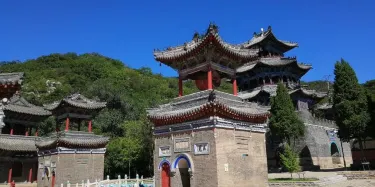
Huludao Shengshuisi.
Opening Hours
The temple is open daily from 7:30 AM to 6:00 PM. It’s advisable to arrive early to fully appreciate the peaceful atmosphere and explore the various attractions within the complex.
Admission
Entrance to Shengshuisi is free, allowing visitors to immerse themselves in the rich history and stunning architecture without any financial barriers. However, it’s wise to check for any updates or changes in access prior to your visit.
Getting There
To reach Shengshuisi, you can take local transport options such as buses or taxis from Huludao city. If you’re driving, the temple is easily accessible via the main roads leading north out of the city. There’s ample parking available nearby.
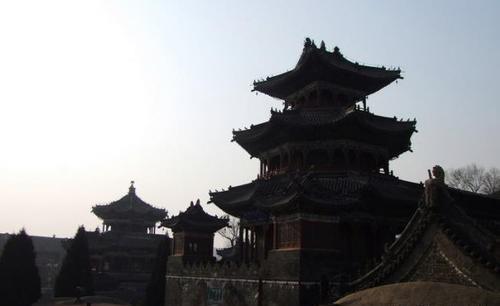
Huludao Shengshuisi.
Temple Highlights
-
Tianyuan Palace (天元宫): This grand entrance features a unique three-tiered structure with a square base and a round dome. The intricate architectural design showcases traditional Chinese aesthetics, making it the focal point of the temple complex.
-
The White Pagoda (白塔): A striking feature within the temple grounds, the White Pagoda symbolizes Buddhist teachings and adds to the serene beauty of the area.
-
Lianhua Pool (莲花池): This tranquil pool is fed by a perennial spring known as “Holy Water,” which is said to flow year-round. The sight of mist rising from the pool during colder months creates a magical atmosphere.
-
Pavilions and Courtyards: The temple complex features several pavilions, including Mingxin Pavilion and Biyun Palace, each adorned with beautiful carvings and paintings that reflect the artistic traditions of Chinese culture.
-
Cultural Relics: As a national key cultural relic protection unit, the temple houses numerous historical artifacts and inscriptions that narrate its storied past.
Nearby Attractions
After visiting Shengshuisi, consider exploring other nearby attractions:
– Longwan Beach (龙湾海滨): A beautiful coastline perfect for relaxation and sea activities.
– Xingcheng Ancient City (兴城古城): A historical site rich in culture and architecture.
– Lingshan Temple (灵山寺): Another notable temple in the region, offering a glimpse into local spiritual practices.
Accommodation
For those wishing to extend their stay, there are several hotels and guesthouses in the vicinity of Huludao. Options range from budget-friendly to more luxurious accommodations, such as:
– Holiday Inn Express Huludao
– Huludao International Hotel
– Baidawan Spa Hotel
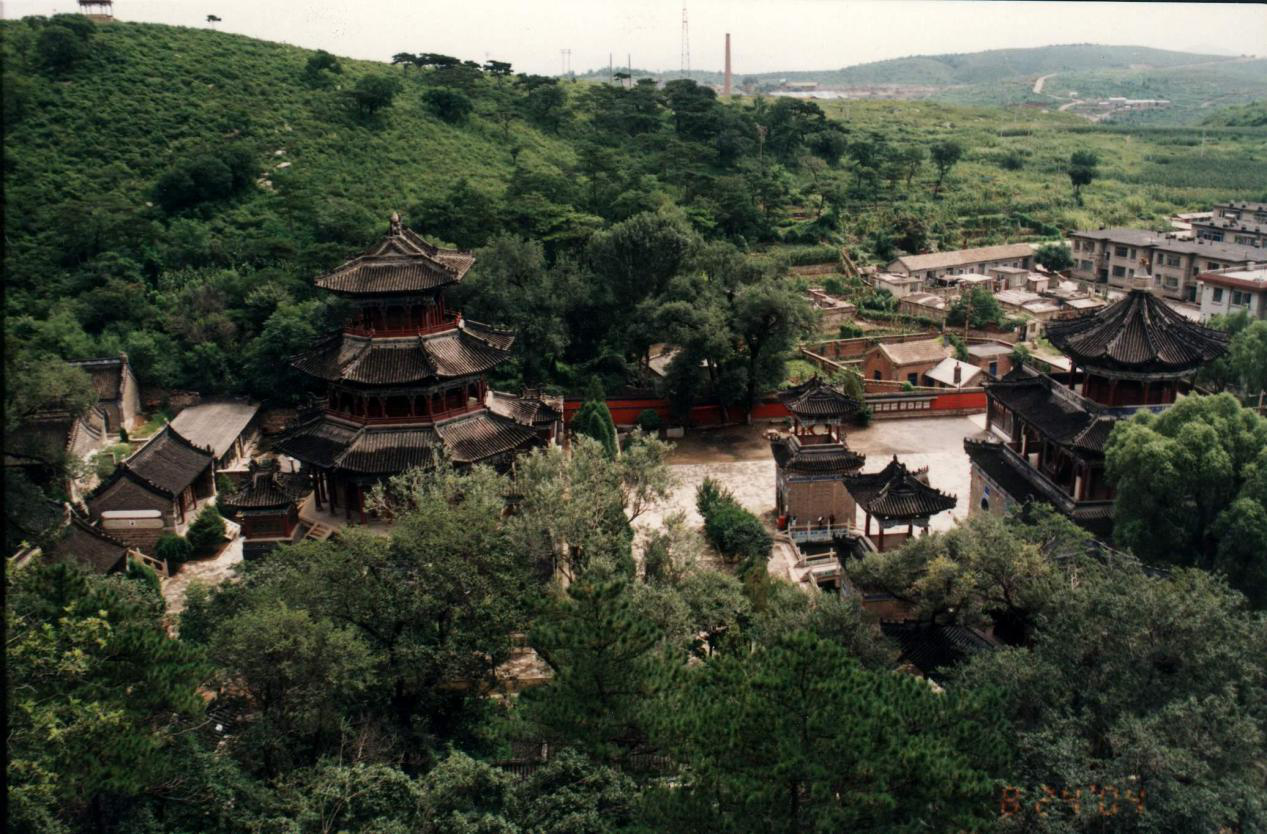
Huludao Shengshuisi.
Dining Options
While exploring the area, indulge in local cuisine at nearby restaurants. Look for eateries that specialize in Liaoning dishes, offering fresh seafood and regional specialties.
Travel Tips
- Dress Modestly: As a place of worship, it’s respectful to dress conservatively.
- Photography: Capture the beauty of the temple, but be mindful of signs prohibiting photography in certain areas.
- Plan for Weather: Check the weather forecast before your visit, as conditions can change rapidly in mountainous areas.
By following this practical guide, you’ll be well-prepared to enjoy the serene beauty and cultural depth of Huludao Shengshuisi. Whether you’re a history buff, a spiritual seeker, or simply looking for a picturesque spot to relax, this temple has something to offer everyone.
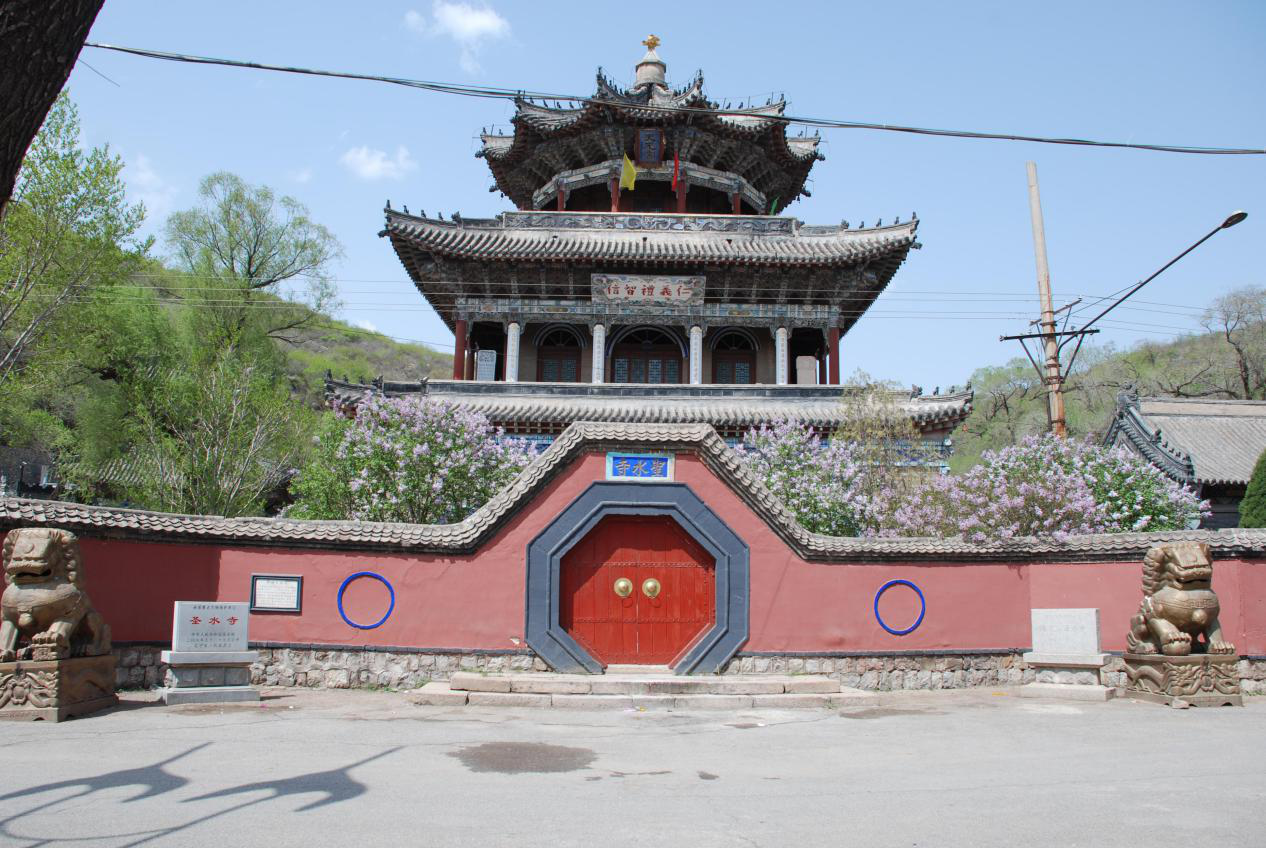
Huludao Shengshuisi.
Tickets, Hours, and Booking
When planning your visit to Shengshuisi Temple (圣水寺) in Huludao, it’s essential to know that entrance to this serene site is completely free of charge. This makes it an accessible destination for travelers looking to explore its rich cultural heritage and beautiful surroundings without any financial barrier.
The temple is open to visitors daily from 7:30 AM to 6:00 PM, allowing ample time to appreciate its intricate architecture and spiritual ambiance. As you stroll through the grounds, you can marvel at the main hall, Tiangong Palace, and the stunning surrounding gardens, all set against the picturesque backdrop of Lotus Mountain.
While the temple itself does not charge for admission, be sure to check in advance for any potential updates regarding opening hours or special events that might require a reservation. This ensures that your visit goes smoothly and you can fully immerse yourself in the experience.
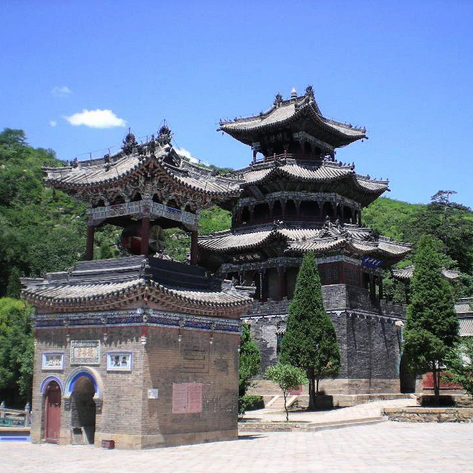
Huludao Shengshuisi.
For those looking to enhance their journey, consider exploring nearby attractions or participating in local tours that may offer additional experiences, such as guided visits or cultural workshops, although these may come with their own ticket prices.
Enjoy your peaceful retreat at Shengshuisi Temple, where history and tranquility await!
How to Get There
Getting to and around Huludao Shengshuisi (圣水寺) involves several transportation options, making it convenient for visitors to experience this remarkable site nestled in the foothills of the Lianhua Mountain in Liaoning Province, China.
Arriving at Huludao Shengshuisi
By Air
The nearest major airport to Huludao is Jinzhou Airport (JNZ), located approximately 100 kilometers away. This airport services domestic flights primarily from major cities such as Beijing and Shanghai. From Jinzhou, you can hire a taxi or use a ride-sharing app to reach the temple.

Huludao Shengshuisi.
Alternatively, Shenyang Taoxian International Airport (SHE) is about 250 kilometers away and offers more international connections. From Shenyang, you can take a high-speed train to Huludao or a long-distance bus.
By Train
Huludao has a well-connected railway station, making train travel a convenient option. High-speed trains run frequently from cities like Shenyang and Beijing to Huludao Station. Once you arrive at the station, you can either take a taxi or local bus to reach the temple.
By Bus
Long-distance buses operate from various cities in Liaoning Province to Huludao. The local bus station is located near the city center, and from there, you can catch a bus that heads towards Lianhua Mountain. The journey typically takes around 1 to 1.5 hours.
Local Transportation
Taxis and Ride-Sharing
Taxis are readily available throughout Huludao, and they provide a convenient way to reach Shengshuisi. Ride-sharing apps like Didi Chuxing also operate in the area, offering a reliable alternative for tech-savvy travelers.
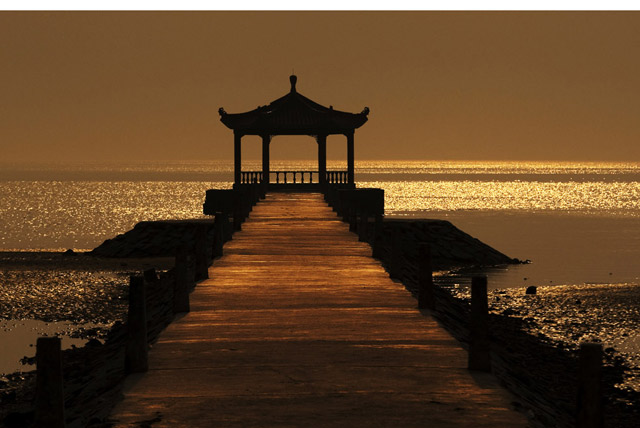
Huludao Shengshuisi.
Public Buses
For those looking to save on transportation costs, local buses can be a good option. However, routes may not be as direct, and schedules can vary, so it’s advisable to check local transit information beforehand.
Exploring the Area
Once at Shengshuisi, the temple grounds are expansive and best explored on foot. The scenic surroundings and various structures within the temple complex invite leisurely strolls. Be sure to wear comfortable shoes, as some areas may involve walking on uneven terrain.
For visitors wishing to explore beyond the temple, consider renting a bicycle or hiring a local guide to discover nearby attractions. The picturesque Lianhua Mountain area offers hiking trails and stunning views, making it a perfect complement to your spiritual journey at Shengshuisi.
In summary, whether you choose to arrive by air, train, or bus, reaching Huludao Shengshuisi is straightforward. Once there, enjoying the beauty and tranquility of the temple and its surroundings is best done at a leisurely pace.
Local Cuisine and Accommodation
When visiting the stunning Shengshuisi Temple (圣水寺) in Huludao, you’ll find a range of delightful dining options and comfortable accommodation nearby to enhance your experience.

Huludao Shengshuisi.
Dining Options
-
Laoyou Teahouse (老有茶莊)
Located about 24 kilometers from the temple, this charming teahouse offers a serene atmosphere perfect for relaxing after a day of exploring. Enjoy a variety of traditional Chinese teas and light snacks while soaking in the tranquil surroundings. -
Jinxiuhua Garden Dining (锦绣花园成家菜馆)
This restaurant specializes in local cuisine and is an excellent place to savor authentic dishes made from fresh, local ingredients. It’s a great spot for a hearty meal, featuring both classic and modern interpretations of regional flavors. -
Shuanghe Rice Restaurant (双鹤饭庄)
Situated a short distance from the temple, this eatery is known for its Xinjiang-style dishes. If you’re in the mood for something different, try their signature rice dishes, which are flavorful and satisfying. -
Qingzhen Garden (清真园)
For those seeking halal options, Qingzhen Garden is a fantastic choice. Here, you can indulge in a variety of dishes that highlight the region’s culinary diversity, all prepared in accordance with halal practices.
Accommodation Choices
-
Huludao Seaview Holiday Inn (葫芦岛海景智选假日酒店)
With a rating of 4.4, this hotel provides stunning views of the sea and is just a short drive from the temple. Guests can enjoy modern amenities, a fitness center, and a complimentary breakfast to start their day right. -
Huludao International Hotel (葫芦岛国际酒店)
Located near Longwan Beach, this hotel features elegant rooms and a welcoming atmosphere. With a rating of 4.1, it offers easy access to local attractions and a range of dining options within the hotel itself. -
Bai Da Wan Mei Hot Spring Hotel (葫芦岛百大万美温泉酒店)
For a relaxing stay, consider this hot spring hotel, rated 4.5. Guests can unwind in natural hot springs after a day of sightseeing, making it a perfect retreat. -
Kaili Hotel (凱麗酒店)
Another excellent option, this hotel boasts comfortable accommodations and is ideal for travelers looking for convenient access to both the temple and the surrounding area. Its rating of 4.6 reflects high guest satisfaction.
Whether you’re indulging in local delicacies or resting up after a day of exploring, the food and accommodation options near Shengshuisi Temple ensure a fulfilling visit to this beautiful part of Huludao.
Frequently Asked Questions
-
What are the opening hours of Huludao Shengshuisi?
Huludao Shengshuisi is open daily from 7:30 AM to 6:00 PM. It’s recommended to check for any updates before your visit. -
Is there an entrance fee to visit the temple?
Entry to Huludao Shengshuisi is free of charge. However, it’s advisable to verify any potential changes in admission policies prior to your visit. -
How can I reach Huludao Shengshuisi from the city center?
The temple is located approximately 30 kilometers north of Huludao city center, near the Yangjiazhuangzi Economic Development Zone. Local transportation options include taxis or public transport, which can be arranged for convenience. -
Are there any significant attractions within the temple complex?
Yes, the temple features several notable sites, including the Tianyuan Palace, the Lotus Pond, and the White Pagoda, all of which showcase stunning architecture and cultural significance. -
What should I wear when visiting the temple?
It is advisable to wear respectful clothing, avoiding shorts and sleeveless tops. Comfortable shoes are also recommended, as you may be walking on uneven surfaces. -
Can I take photographs inside the temple?
Photography is generally allowed in the temple grounds, but be respectful of worshippers and follow any specific guidelines regarding photography in sacred areas. -
Are there any facilities available for visitors?
The temple area has basic facilities, including restrooms. However, amenities such as food services may be limited, so it’s a good idea to bring snacks and water. -
Is Huludao Shengshuisi accessible for people with disabilities?
While some areas of the temple may be accessible, the terrain can be uneven. It’s best to check with local authorities or guides for specific accessibility accommodations.

Huludao Shengshuisi.
Final Thoughts on Your Trip
Visiting Huludao Shengshuisi is more than just an exploration of an ancient temple; it’s a journey into the heart of China’s rich spiritual and architectural heritage. Nestled at the foothills of Lianhua Mountain, this exquisite site invites visitors to immerse themselves in its serene atmosphere, breathtaking landscapes, and intricate designs.
From the moment you pass through the grand entrance of Tianyuan Palace, you’ll be captivated by the harmonious blend of Buddhist, Taoist, and Confucian elements that tell a story of devotion and artistry. The tranquil sounds of the flowing spring water, believed to be holy, add a mystical charm to the surroundings, making it a perfect spot for reflection and peace.
Whether you’re a history buff, a spiritual seeker, or simply a traveler in search of beauty, Shengshuisi offers a unique experience that resonates with the soul. As you wander through the temple’s expansive grounds, take a moment to appreciate not just the architectural marvels but also the natural beauty that envelops this sacred place.
In conclusion, a visit to Huludao Shengshuisi promises to be a memorable adventure, enriching both the mind and spirit. Embrace the tranquility, absorb the culture, and let this ancient temple inspire you in ways you never expected.
